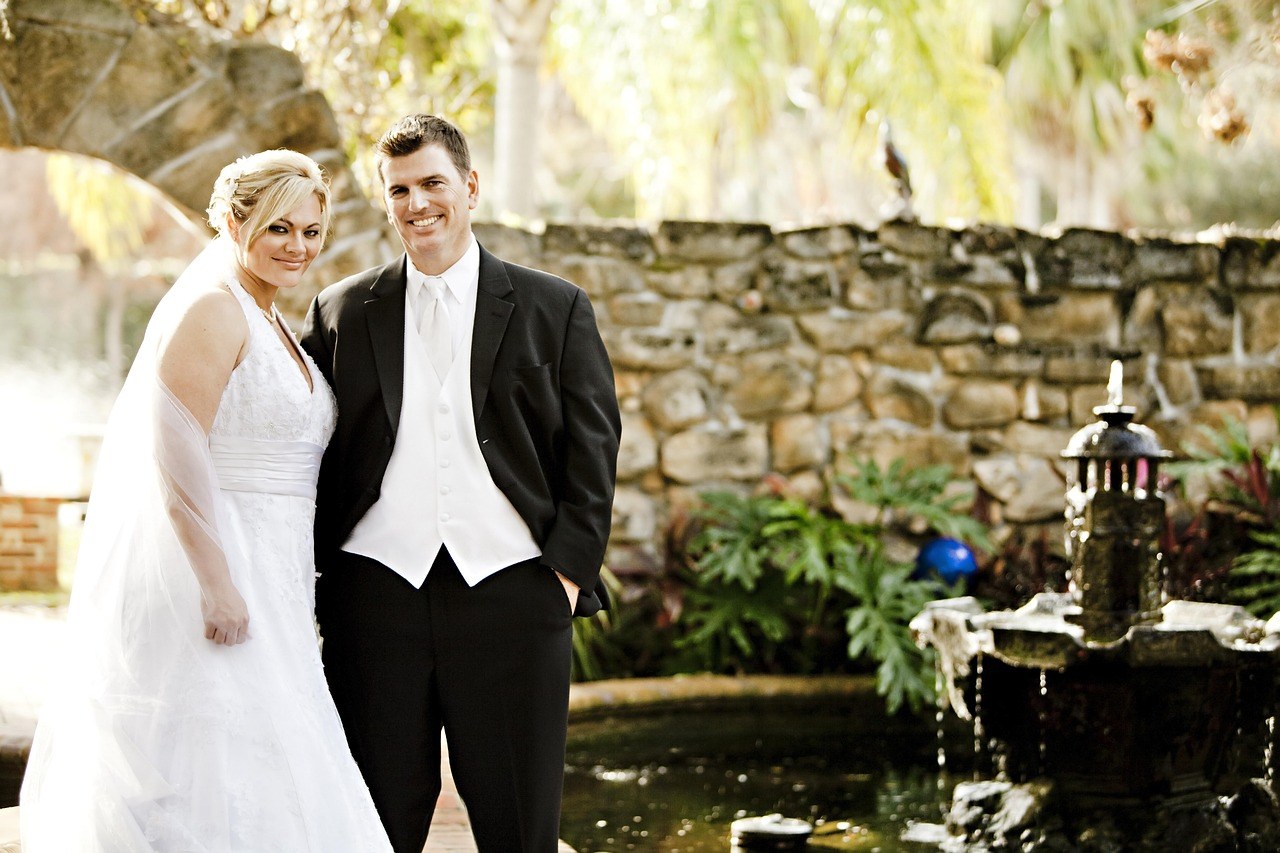Opening a relationship to include others can feel both thrilling and intimidating – and those mixed feelings are normal. An open marriage asks two spouses to remain a united team while allowing certain kinds of connections with people outside the partnership. That idea only works when the couple sets clear terms, communicates with care, and treats the marriage as the anchor. If you’re curious about an open marriage, this guide reframes the essentials in plain language so you can evaluate the idea thoughtfully and discuss it with confidence.
What an open marriage really means
Traditional marriage is often framed as a closed circle, where intimacy – emotional and sexual – happens only between the spouses. An open marriage keeps the legal, spiritual, and personal commitment intact while allowing consensual encounters with others under mutually agreed boundaries. For many couples, the extra relationships are sexual rather than romantic; the emotional core remains between the spouses. That said, there isn’t a universal template for an open marriage. You define what it means for your relationship and what it absolutely does not include.
In practice, an open marriage might permit casual hookups but draw the line at dating, or it might allow regular partners with limits on sleepovers, travel, or public displays. The crucial point is consent and clarity. You and your spouse co-author the rules – not friends, not culture, not a trend – and you revise them as you learn what supports your bond.

How to raise the idea with your spouse
Before saying a word out loud, sit with your reasons. What’s motivating the conversation – a mismatch in libido, curiosity about specific experiences, different orientations or kinks, a desire for novelty? Write down the core motivations and what you believe would be good for both of you, not just for yourself. Then choose a respectful moment to talk at home with time and privacy. Lead with care: you’re not announcing a decision; you’re inviting a discussion.
It helps to reassure your partner that you haven’t acted on the idea. You’re exploring possibilities, not confessing an affair. Explain why the marriage is still your priority and how any new arrangement would keep that priority visible – for example, by agreeing on protected time, check-ins, or boundaries that protect your day-to-day life together. Offer space for your partner to react – confusion, curiosity, or strong emotions may surface, and that’s okay. The goal is mutual understanding, not a fast yes.
When you don’t agree
Sometimes one spouse feels energized by the thought and the other feels unsettled. If they decline, you face a values question: can you be fully satisfied within monogamy, or would resentment grow? If the desire was simply a passing itch, the conversation may help you reconnect and try new things together. If it points to unmet needs, discuss those needs directly – including how to address them inside the relationship. What you cannot do is pressure your spouse or go behind their back; secrecy would turn any arrangement into betrayal.

Is this structure right for you?
Ask yourself tough questions before proposing an open marriage. Are you seeking this to fix a broken dynamic? If so, pause – adding complexity rarely repairs fundamental problems. Do you and your spouse already share robust honesty, emotional safety, and trust? Are you willing to hear uncomfortable truths – and to share your own – without punishing each other? Can you abide by detailed agreements even when tempted to bend them? The green light appears only when both of you are prepared for radical transparency and steady care.
Core ground rules that protect the relationship
There’s no single correct blueprint, but skipping structure is a recipe for hurt. Consider the following principles as a foundation you can tailor to your open marriage. Use them as prompts to design agreements that feel protective rather than restrictive.
Define your version together. Decide what an open marriage means in your home. Spell out what’s in bounds – and what is not – with examples. Are outside connections sexual only, with no dating? Is sharing contact information with your spouse required? Put the essentials in writing so expectations live outside memory and mood.

Use technology thoughtfully. Dating and hookup apps like Tinder, OkCupid, or Bumble can reduce awkwardness and create clear contexts. Agree on profiles, what you disclose, and whether you share screenshots or keep that detail private. Tech is a tool – make it serve your agreement rather than drive it.
Accept that it isn’t for everyone. Even resilient couples may find the emotional load too heavy. If one of you tries and realizes the structure harms their well-being, that truth matters. Inclusion in an open marriage is voluntary – not proof of strength.
Say what you really feel. If you’re nervous, skeptical, or need specific assurances, speak up. If you’re enthusiastic but want certain limits, advocate for them. Clarity beats conflict – and silence breeds stories.
Commit to whole-truth honesty. You don’t need to narrate every minute of every encounter, but agreements only work when you tell the truth – especially if something starts to feel off or if emotions shift. The moment a crush deepens or a boundary feels shaky, bring it home.
Expect the rules to evolve. You can’t anticipate every scenario on day one. Agree to revisit the structure at set intervals and after notable events. Flexibility – within the guardrails – helps the arrangement fit your real life.
Check your motives. If the goal is revenge, a test, or patching a crisis, press pause. An open marriage thrives when the relationship is fundamentally sound and both spouses can keep the marriage at the center even while exploring elsewhere.
Design clear, specific rules. Will you meet partners separately, together, or both? Are repeat partners okay, or do you prefer one-time encounters? Any limits on times, locations, or overnights? Is gender relevant? The more concrete the answers, the easier it is to uphold them.
Protect sexual health. Agree on safer-sex practices for every outside encounter – barrier methods, testing frequency, and what happens if a risk event occurs. Some couples use barriers with each other during active periods with others, returning to usual habits after testing. Decide what keeps each of you protected and at ease.
Be transparent with partners. Let outside partners know that you’re married and operating within agreements. Clear expectations prevent confusion and reduce the chance of someone feeling misled. If a connection continues, basic courtesy applies – respect their autonomy and time.
Keep mutual friends out of it. Entangling close friends or colleagues can inject long-term strain into social circles. It’s simpler – and often kinder – to meet new people outside your shared orbit.
Don’t rename cheating. When you break the rules you co-wrote or hide material facts, that’s not openness – it’s infidelity with extra steps. If you want to change a rule, discuss and renegotiate first.
Protect couple time. Your marriage is the primary relationship. Guard rituals like date nights, lazy mornings, favorite shows, and private intimacy. When the calendar gets crowded, prioritize your core – an open marriage should expand pleasure, not erode closeness.
Consider couples counseling. A neutral professional can help you map boundaries, practice language for hard moments, and build repair skills. Therapy isn’t a sign of trouble – it’s a smart investment in resilience.
Remember it isn’t permanent. You can pause, narrow, or close the arrangement if it no longer serves you. Treat the structure as a living agreement, not a tattoo.
Name your fears. Say the quiet parts out loud – fear of being replaced, anxiety about comparisons, worry about time. Hearing each other’s fears invites care rather than defensiveness and helps you plan protective rituals.
Face jealousy directly. Jealousy is information, not failure. Ask what it points to – uncertainty about boundaries, a need for reassurance, or lingering insecurity – and address that need together.
Plan your public story. People may see you on a date, ask pointed questions, or make assumptions. Decide in advance what you’ll say – a simple “We’re happy and have agreements that work for us” can be enough – and who, if anyone, gets more detail.
Allow for mistakes. You will misread a situation, underestimate a feeling, or discover a blind spot. Own it quickly, repair the rupture, and update the rulebook so the same stumble is less likely to recur.
Schedule regular check-ins. Don’t wait for friction to force a talk. Weekly or bi-weekly debriefs – even brief ones – keep you aligned on logistics, health, emotions, and upcoming plans.
Show respect to everyone involved. Your spouse remains your first priority, but courtesy extends to outside partners too. If feelings develop where you agreed they wouldn’t, tell your spouse and be fair to the other person. Respect keeps all parties human rather than disposable.
Think of these guidelines as scaffolding. They support, not suffocate, the marriage. They also make the phrase open marriage concrete rather than vague – you aren’t winging it; you’re building something with intention.
Practical scripts and conversation tips
Words matter when nerves run high. Try starter phrases that communicate care and partnership: “I love our life, and I want us to be the team that decides how we handle desire.” “I’m curious about certain experiences, and I only want to explore if we both feel secure.” “If we try this, our bond stays central – let’s design guardrails that keep us close.” When you share, ask questions too: “What would feel unsafe to you?” “What would help you feel reassured?” “Which boundaries would protect your peace?” Using calm language and questions turns a charged topic into a collaborative plan.
In tense moments, slow the pace. Suggest a pause – a short walk, a glass of water, or time to think – and return to the conversation with lower heart rates. If you need a breather during an early experiment, say so: “I’m at my limit – can we regroup tomorrow?” The goal is not to be endlessly cool but to be reliably caring.
Signs you may be ready – and signs you may not be
Readiness often looks like this: you and your spouse already handle tough topics without stonewalling; you repair well after disagreements; you keep promises around time, money, and privacy; and you’re both willing to abide by rules that inconvenience you when necessary. You can talk about attraction without spiraling and feel confident that your partner will return home emotionally present. That’s the kind of baseline an open marriage needs.
On the other hand, if you’re currently stuck in chronic conflict, nursing resentments, or rebuilding trust after dishonesty, this is the wrong moment. If one of you hopes an open marriage will magically rewrite your sex life, heal old hurts, or prove loyalty, you’re asking the structure to do the work communication must do. Start with the basics – care, honesty, and repair – before adding complexity.
Benefits you might notice when it works
Satisfaction shaped by truth. Couples who communicate openly about desire often report feeling more satisfied together. Naming wants – and seeing them handled with consent – can relieve pressure and improve intimacy at home.
Communication muscles that grow stronger. Repeated, honest check-ins build skills you’ll use in every part of the relationship. You become practiced at listening without panic and speaking without blame.
Trust that deepens through proof. It’s paradoxical, but following through on agreements while navigating temptation can strengthen faith in each other’s integrity. Reliability becomes visible in new ways.
Renewed appreciation. Time apart can sharpen gratitude. You may notice small, tender things you missed before – a favorite laugh, a particular kindness – and return to each other with fresh warmth.
Space to miss your person. Absence can reignite spark. Even brief separations make reunions more vivid, and protected couple time becomes something you savor, not schedule out of habit.
Reduced sexual pressure. When outside experiences meet specific needs, the bedroom at home can feel less freighted with musts and more open to play and connection.
None of these benefits arrive on autopilot. They show up when the marriage stays central, the agreements are honored, and both spouses treat openness as a shared project rather than a loophole. If that sounds like your aim, an open marriage can be a thoughtful way to align reality with desire.
Challenges to anticipate and plan around
The emotional terrain can be bumpy. Jealousy, comparison, and insecurity may sneak in even when you trust each other deeply. Plan for feelings – yours and theirs – and resist the urge to shame them. Use the data: if a particular boundary routinely triggers distress, adjust it. If a type of date feels fine on paper but not in practice, change the rule. An open marriage is a living agreement, not a fixed identity.
Risk also exists around sexual health and pregnancy. Barriers and testing reduce risk but don’t erase it. Decide how you’ll handle potential exposures, missed protections, or surprises before they happen so no one improvises under stress. You’re not inviting danger; you’re acknowledging reality and planning to navigate it together.
Finally, consider the social piece. Not everyone will understand or approve, and some people may judge loudly. You don’t owe anyone details. Choose a simple, dignified script for nosy questions, decide who (if anyone) gets more information, and support each other when outside opinions sting. Protecting your privacy is an act of care for the relationship.
Putting the plan into motion
When you both feel ready, start small. You might set a short trial window – two or three dates total – with a scheduled review. Keep logistics simple at first: familiar locations, clear check-in times, and plans that don’t collide with key couple rituals. After each step, debrief: What felt good? What felt wobbly? What would make the next step kinder to us? Gentle pacing shows respect for the marriage and makes each lesson actionable.
Remember to celebrate the wins. Maybe one of you asked for reassurance and received it quickly; maybe you kept a boundary even when it was inconvenient; maybe you noticed jealousy early and named it without blame. Those are signs that your open marriage is being built with skill – not luck.
Language for repairs
Even with care, ruptures happen. When they do, use repair language that centers impact and next steps: “I broke the check-in rule last night; I see how that scared you. Here’s how I’ll make it right – I’m setting an alarm and sharing my schedule before I leave.” Or, “Hearing about repeated dates made me feel replaceable. I need reassurance – could we plan extra time together this week and revisit our limit on repeat partners?” Repairs restore safety faster than defensiveness ever could.
Keeping the center strong
At its best, an open marriage is less about access to others and more about the two of you designing an honest life. You protect your bond with rituals – shared meals, weekend walks, affectionate texts, inside jokes – and with boundaries that make the marriage feel like home. You’ll likely rework the specifics as you go. That’s not failure; that’s craftsmanship.
If you decide openness isn’t for you after all, you haven’t failed either. You learned something true together and chose the structure that fits. And if you continue, you’ll keep shaping an agreement that reflects who you are – people who love each other, communicate bravely, and treat consent as a daily practice.
Approached with clarity and care, an open marriage can expand freedom while deepening commitment. The guiding question is simple: does this choice help us love each other better? Let that question steer every boundary, every adjustment, and every yes or no along the way.